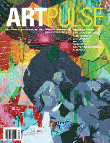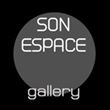« Reviews
Beyond Borders

Robert Longo. Barbara, 1998. Three color litograph, 61/120. 46" x 30". Courtesy of Inter-American Development Bank and Miami Dade College
By Bryan Barcena
In preparation for the Inter-American Development Bank’s (IDB) Annual Meeting held April 4-8 in Miami, Florida, the bank has teamed up with the Miami Dade College Gallery System to exhibit a selection of the organization’s acquisitions. “Beyond Borders: Modernism Through a Selection of Artwork from the Collection of the Inter-American Development Bank,” exhibited March 26 through April 26 brings to light more than 65 works representing 26 nations that serve to highlight the IDB’s dedication to representing and cataloging the varied and dynamic artistic output emanating from the Americas. A sister exhibition is being held at the IDB headquarters in Washington D.C. and will feature the work of Latin American artists working out of Miami. Jointly curated by Jorge Luis Gutierrez of the MDC’s gallery system and Felix Angel, head of the IDB cultural center, the exhibition truly functions as a survey of the art of the Americas wherein its foremost practitioners are faithfully represented.
The greats of Latin American Modernism: Orozco, Lam, Matta, Torres-Garcia and Rivera, among many others, are presented in a chronological arrangement throughout the vast and well-spaced halls provided by the Freedom Tower. Standouts within the canon include a striking self-portrait by the Mexican muralist, Diego Rivera, and a dazzling full color print of Cundo Bermudez’s fragmented figures. Being that the bulk of the exhibition consisted of numbered lithographs and prints, the more delicate and intimate original drawing by Joaquín Torres Garcia seemed to offer the viewer a singular archival treasure. Prints by Mexicans, Jose Clemente Orozco and Rufino Tamayo, fleshed out the exhibit highlighting each unique contribution to the varied styles that make up the beginning of the 20th Century.
A collection of the works representing late 20th Century Latin American minimalists includes a piece by Venezuelan artist, Jesus Rafael-Soto, which occupies one corner of the exhibition space. Notable works include Gunther Gerszo’s “Mujer de la Jungla IV,” a bold piece replete with the oversaturated primary colors and stark geometries that the Mexican painter is known for, and a sparse and angular piece that manages to exude an elastic dynamism by Colombian, Eduardo Ramirez Villamizar, entitled “Kabuki.”
Demonstrating the IDB’s commitment to representing all of the Americas, there were a significant number of works stemming from the Caribbean and Canada including the work of Trinidadian mixed-media artist, Christopher Cozier, entitled “About Balance,” a large monochromatic wood-cut print by Bahamian artist, Taylor Maxwell, of a dramatic Afro-Caribbean slave woman entitled “Lord, Am Tired,” and a densely-layered oil painting by Canadian, John Barkley.
A large part of the collection having been acquired during the 1980s and 90s, the collection tends to thin out reaching forward past the beginning of the millennium. However, the curators have made a solid effort to include some of the most well-respected American artists from the latter half of the century. The quintessential New York School is represented by two pop art works, a signature Robert Rauschenberg print displaying his crowded and multi-layered style, and Warhol’s neon-color portrait of Sacagawea. The two prints by Robert Longo are a treat to behold; two seminal prints from his “Men in Cities” series illustrate a businessman and woman, sharply twisted in monochromatic agony.
The contemporary Latin American portion of the exhibit is quite limited. Outstanding work includes a lithograph by prominent contemporary Cuban artist, Jose Bedia, illustrating his unique take on Afro-Cuban identities and an intriguing piece by Guatemalan artist, Luis Gonzalez Palma, touching on the political with his sepia-tinted depiction of bodies in “Ora Pronobis,” a reflection on the abuses committed against indigenous people throughout Central America.
The merit of this exhibit lies in its ability to touch, albeit briefly, on the cornerstones of a century of artistic production. The common elements and cross-pollination that bring the two continents together artistically are exposed through a melee of contrasting techniques and mediums, highlighting the varied and vigorous creative processes taking place. It is apparent that the Inter-American Development Bank and Miami Dade College hope to foment these processes both inside and outside their walls.
Filed Under: Reviews


































